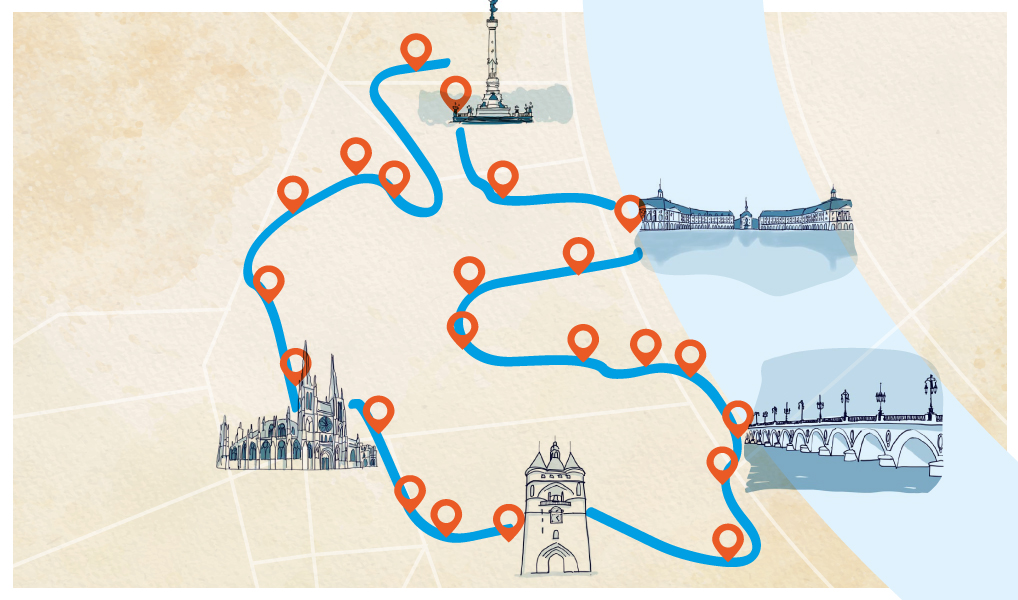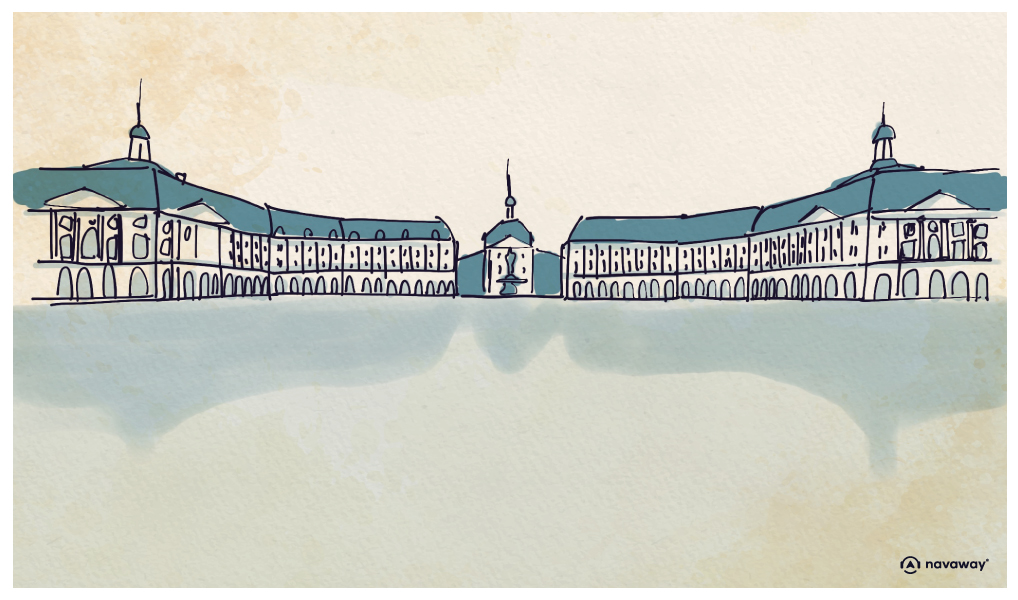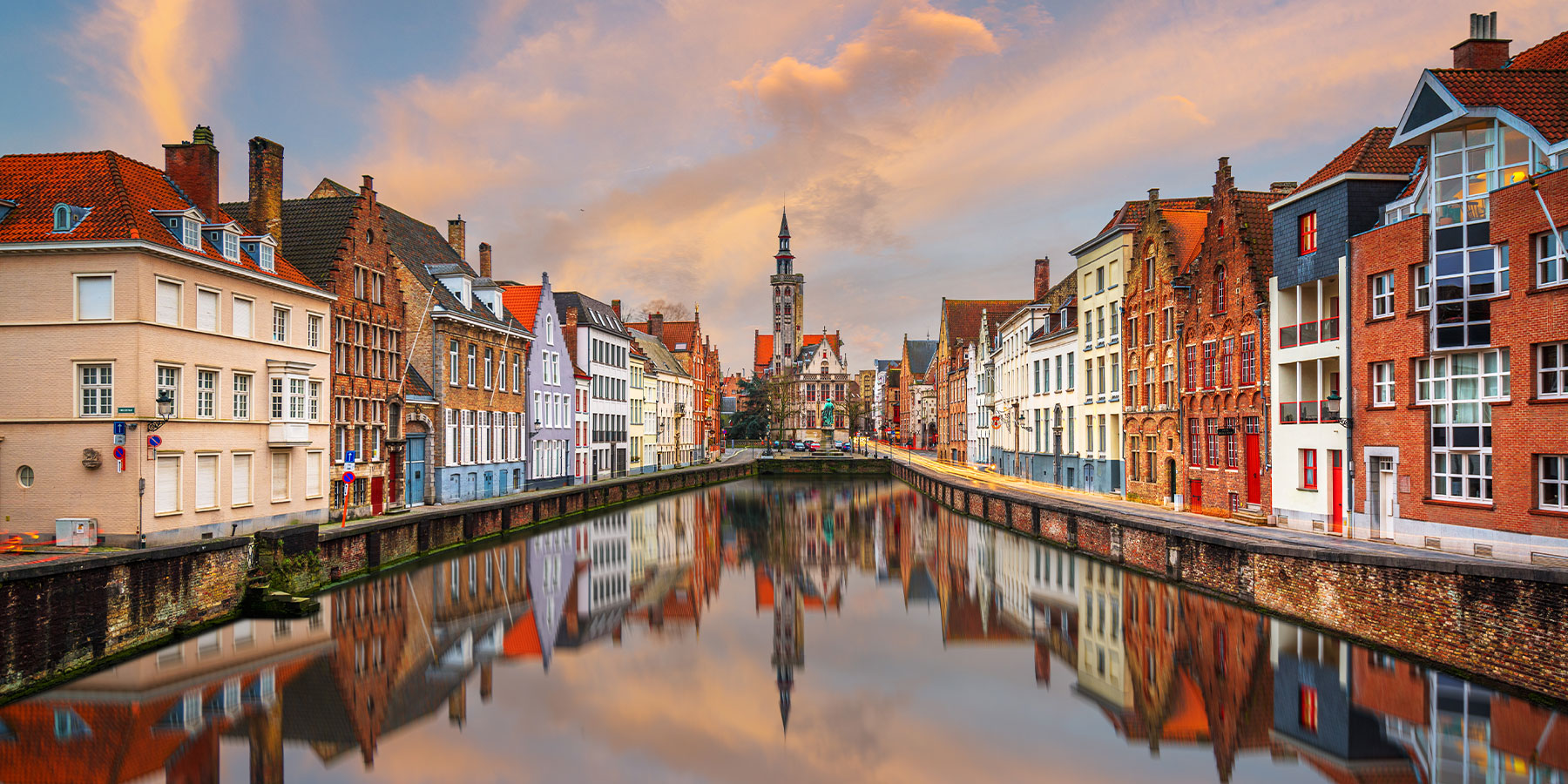
Water Mirror and Exchange Square

This point of interest is available as audio on the tour: Visit Bordeaux, The Sleeping Beauty
The water mirror, now a World Heritage Site, is clearly stealing the show from the Exchange Square, and you’ve got to admit that it’s quite impressive. It actually enhances the building through it’s reflection, sometimes shimmering, sometimes appearing in the mist, much to the delight of photographers. Creating an ultra-modern water mirror in front of a nearly three-century-old building is definitely a brilliant idea! It was designed by landscape architect Michel Corajoud, inspired by the water-covered St Mark’s Square in Venice. This magical work of art combines mirror and fog effects in 15-minute cycles. It is a place conducive to daydreaming, strolling and children’s play. It is certainly the largest water mirror ever built, and other cities around the world are considering the idea of creating their own. But let’s not forget our initial interest, the Exchange Square, so magnificent that it was described by Victor Hugo as a sort of half Vendôme Square beside the water. This impressive complex comprising the Exchange House and the Custom House – also called Hotel des Fermes – was built in the early 18th century following architect Jacques Gabriel’s plans, who was to become Louis XV’s architect. This unique structure was intended to showcase the equestrian statue of the King of France and to reflect the city’s prosperity. Harmonious façades inspired by the Vandome square were installed when the king’s statue arrived, as it could not be left in the middle of an empty square. Don’t bother looking for the said statue, it was melted down during the Revolution to make cannons! In its place, you can admire the fountain of the 3 grace representing Zeus’ 3 daughters. Legend has it that the three female statues took on the features of three monarchs of the time: Empress Eugenie, wife of Napoleon III, Queen Isabella of Spain and Queen Victoria of England. The square was the first breach made in Bordeaux’s ramparts. In fact, the quartermaster wanted to open up the city to the river and provide a more welcoming entrance for foreigners arriving from the right bank. This was a rather nice move on his part. As a result, part of the city walls were demolished to create what was originally known as the Royal Square. And I stress on “originally” because just like many squares around the world, it has changed names over the years. Liberty Square during the Revolution, Imperial Square under Napoleon, back to Royal Square when the monarchy was reintroduced during the Restoration, then Exchange Square because of the palace bearing the same name, which you can see to the north of the square and which today houses the Chamber of Commerce and Industry. Whatever its name, the Exchange square and its water- mirror are a must-see in Bordeaux today.


Discover Bordeaux with app
An interactive guide through the most beautiful streets, squares, and districts
29 fun audioguides full of historical facts, anecdotes, and legends





Comments